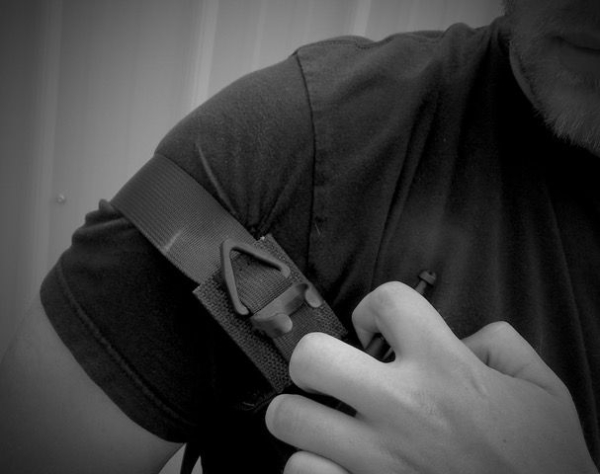Summer has arrived; with a vengeance here in Alabama. That means it is also time for our yearly talk about tourniquets.

According to the data, injuries of all types increase in summer. Car wrecks rise significantly; there are more drivers on the roads, especially teenagers and with road construction obstructing traffic. Workplace injuries increase. Outdoor shooting ranges see more visitors. Trauma from lawn mowers, vacations and all other summer activities push the number of injuries higher. Plus, summer is when there are more protests/riots/shootings. In other words, summer is dangerous. A great way to be prepared to save a life is knowing how to use a tourniquet and to have one on hand.
There are three things you need to do to keep someone with heavy injury alive until they get “real” help. Keep them breathing, prevent them from going into shock and stop the bleeding. Everyone should know CPR; it’s simple. The techniques for preventing shock are just as easy. But if you can’t stop the bleeding none of that will help.
Arterial bleeding is severe. Oxygenated blood -bright red – is coming out with pulses or spurts. Blood makes up about seven percent of the body weight. Someone weighing 180 pounds has about 5 liters, or two and one-half of the big 2-liter soda bottles of blood. You can lose about 16 ounces – a regular size soda - without concern, so don’t be alarmed if you see a “lot” of blood.
With 15-30 percent blood loss the body begins experiencing hemorrhagic shock. An increased heart rate, labored breathing and paleness are some of the symptoms. The injured party is about to lose consciousness. At forty-percent blood loss the body can’t compensate any longer. With arterial bleeding there’s only a few minutes to apply life-saving actions.
When this happens in the limbs – arms and legs – the most efficient means of controlling the bleeding is a tourniquet. Application of a tourniquet is simple. “Go high or die.” Position it as high on the limb as possible, the groin or armpit. “Tight is right.” The pressure on the band should be tight enough to cause pain and then, tighten it some more. You’re done. Once it’s applied, do not loosen. Relieving pressure will only blow out the clot that has formed, and the body’s next attempt to form a clot will not be as strong as the original. The limbs can last a long time with that tourniquet. Learn how to apply the tourniquet -- on others and on your own body.
Having immediate access to a tourniquet is the problem. Put them in your car’s emergency bag. Hang one by both front and rear door of the house. Add one to your range bag. When you’re on the range shove it in your pants’ pocket. If I had kids, their classroom would have several. Remember, if needed, you only have minutes -- not very many -- to stop the bleeding.
The tourniquet is number one on the list of necessary. Number two is a set of “trauma” shears. You don’t want to be using a sharp knife to cut through thick, heavy clothing in order to get to the wound. Having some battle-bandages, gauze, and blood clotting agents on hand is good, too.
Lord willing, none of us will ever see the need for a tourniquet. But reality says differently. Make sure if it’s needed that you know how to use it, and can put your hands on one immediately. Plus, we know that those who are prepared usually have less need.
Tiger McKee is director of Shootrite Firearms Academy. He is the author of The Book of Two Guns, AR-15 Skills and Drills, has a regular column in American Handgunner and makes some cool knives and custom revolvers. Visit Shootrite’s Facebook page for other details.